The BlendJet 2 may appear to be a simple, portable single-serve blender, but beneath its sleek exterior lies a carefully engineered combination of mechanical and electrical components. From its compact… Read More
BLENDJET 2 PORTABLE BLENDER TEARDOWN
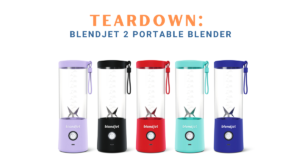
| by Andrew Gosline and Neil Foxman

The BlendJet 2 may appear to be a simple, portable single-serve blender, but beneath its sleek exterior lies a carefully engineered combination of mechanical and electrical components. From its compact… Read More

Today, many companies are struggling to match engineering skill sets with evolving design requirements for today’s most innovative products. Many aren’t aware of the integrated engineering staffing models they can… Read More
| by Tristan Dudik
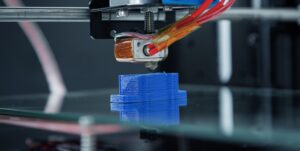
There is a lot of hype about 3D printing. 3D printing technologies have been transformative in many industries, including product development. With 3D printing we can get complex geometry in… Read More
| by Kristin Pollock

In the face of escalating climate change concerns, the imperative for sustainable and eco-friendly solutions has never been more critical. The International Panel on Climate Change has set a goal… Read More
| by Doug Harriman

I recently listened to the November 21, 2023, episode of The Agile Embedded Podcast. In this episode hosts Jeff Gable and Luca Ingianni interviewed their guest Max Kolesnikov about Model… Read More
| by Daniel Giles and Ian Neunzig
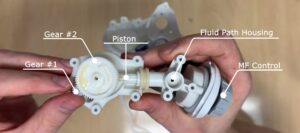
Packed with simplified design, the Waterpik Aquarius water flosser brings consumers a new approach to traditional flossing. Gone are the days of broken minty strings that often snap into your… Read More
| by Tristan Dudik
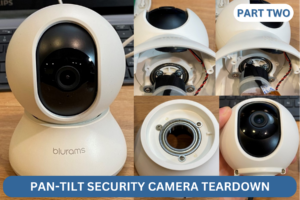
Welcome back to the product tear-down of a Pan-tilt camera! This is part two, where we’ll open up the ball head and see what’s inside. In part one of the… Read More
| by Tristan Dudik
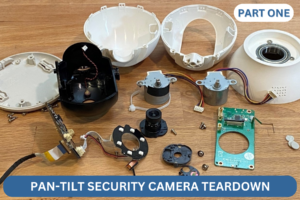
I purchased a home security camera with the intent of taking it apart and learning how it works. The camera was inexpensive and mechanically complex, featuring a two-axis gimbal, a… Read More
| by Theresa Ramirez

What is FMEA? FMEA (Failure Mode and Effect Analysis) is a structured approach used to identify potential failure modes in a system, process, or product, and to evaluate the potential… Read More
| by John Geile
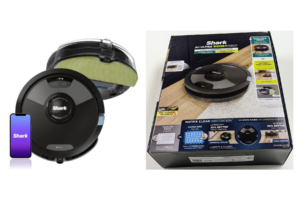
The Shark AI Ultra 2-in-1 robot vacuum is a smart and innovative cleaning appliance designed to make your cleaning experience easy, effective and hassle-free. It comes with advanced features like… Read More
The Simplexity team can be as involved in the production phase as requested by our clients. For clients with internal manufacturing or established relationships with contract manufacturers, our engineers are available to ensure quality is maintained and provide ongoing engineering support as needed.
Simplexity has a dedicated New Product Introduction (NPI) team that can guide the transition from design into production. The NPI team presents multiple options for manufacturing to the client, allowing clients to choose the solution that best suits their needs. This can involve Simplexity performing initial builds in-house prior to full handoff to a contract manufacturer or building the product via established relationships with contract manufacturing partners either domestically or overseas early in the process.
This phase occurs once the detailed design is complete, and prototypes are built with manufacturing-representative quality and detail. More extensive, formal testing is performed, such as life, reliability, safety, environmental, drop, and vibration.
The design team works closely with the manufacturing team to enable a smooth transfer, often with Simplexity engineers traveling to the contract manufacturer sites to ensure product quality. The design is transferred to the client based upon specific needs, most often after all tests are complete and the design is verified.
Phase 2C iterates on the learnings of Phase 2B and involves a refined prototype build of a fully integrated system. Some projects also benefit from additional iterations of the product based on prior learnings through additional phases (2D, 2E, etc), which are not represented in this graphic. All requirements are intended to be tested, and at the end of Phase 2 there will be confidence that the units will pass verification in Phase 3. The Bill of Materials is further refined, and the team updates estimates for the per unit cost of the product by receiving pricing from vendors and suppliers.
The detailed design phase usually has multiple, iterative sub-phases as the design progresses and representative prototypes are built. Phases 2B and 2C are typically the largest efforts in the product development process, where the specific implementation for all disciplines occurs (mechanical, industrial design, electrical, firmware, systems, software, manufacturing, and quality).
Simplexity typically engages with production component suppliers and contract manufacturing groups early in this phase to provide additional manufacturing input on the design. If the product has stringent testing or certification requirements, pre-screens are performed in this phase prior to formal regulatory agency testing.
Phase 0 is an optional phase for projects where the technical feasibility of the idea has not yet been fully proven. It can consist of research, concept work, exploring initial architecture, performing feasibility studies, and basic prototyping and testing.
The business and user requirements are converted into engineering requirements for the product. The project planning activity is based on the schedule, budget, risk, and initial product requirements. This process is best done as a collaborative team effort with the client, who has the deepest understanding of the market needs and user requirements.
The detailed design phase starts with defining options for the product architecture, with the goal of having the greatest chance of successfully meeting product requirements while best mitigating risk. Engineering activities in this phase include presenting options for hardware components, outlining the system block, sequence, and state diagrams, creating rough CAD, and breadboarding of high-risk subsystems. Results are presented with a description of the pros, cons, and key tradeoffs for each scenario.
